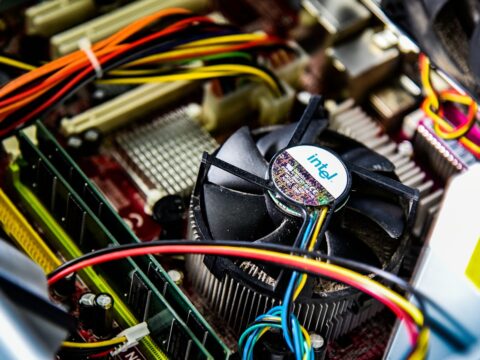
Ethereum, the second-largest cryptocurrency by market capitalization, has gained significant popularity in recent years. However, one of the major challenges that Ethereum users face is the issue of high gas fees. Gas fees are an essential component of the Ethereum network, as they determine the cost of executing transactions and smart contracts. In this article, we will delve into the concept of gas fees, their calculation, and their importance in the Ethereum ecosystem. We will also explore various factors that affect gas fees and provide tips for reducing them.
What are Ethereum’s gas fees and why do they matter?
Gas fees in Ethereum refer to the cost associated with executing transactions and smart contracts on the network. Gas is a unit of measurement that quantifies the computational effort required to perform a specific operation on the Ethereum blockchain. Each operation, such as transferring tokens or executing a smart contract function, consumes a certain amount of gas.
Gas fees are crucial in the Ethereum ecosystem for several reasons. Firstly, they serve as an incentive for miners to include transactions in blocks and validate them. Miners prioritize transactions with higher gas fees because they are more profitable to include in a block. Therefore, users who are willing to pay higher gas fees have a better chance of having their transactions processed quickly.
Secondly, gas fees play a role in preventing spam and denial-of-service attacks on the Ethereum network. By requiring users to pay for computational resources, it becomes economically unfeasible for malicious actors to flood the network with unnecessary transactions or execute resource-intensive operations.
How are gas fees calculated on the Ethereum network?
Gas fees on the Ethereum network are calculated using a simple formula: Gas Used x Gas Price = Transaction Fee. The Gas Used represents the total amount of gas consumed by a transaction or smart contract execution, while the Gas Price determines how much Ether (ETH) is paid per unit of gas.
The Gas Used is determined by the complexity of the operation being performed. For example, a simple token transfer may consume less gas compared to executing a complex smart contract function. Each operation has a predefined gas cost, which is multiplied by the number of times that operation is executed.
The Gas Price, on the other hand, is set by the user who initiates the transaction. It represents the amount of Ether they are willing to pay per unit of gas. The higher the Gas Price, the more likely miners are to prioritize the transaction and include it in a block.
Understanding the difference between gas price and gas limit
Gas price and gas limit are two distinct concepts that affect gas fees on the Ethereum network. Gas price refers to the amount of Ether a user is willing to pay per unit of gas, while gas limit represents the maximum amount of gas a user is willing to consume for a transaction or smart contract execution.
Gas price determines how quickly a transaction will be processed by miners. A higher gas price incentivizes miners to prioritize the transaction and include it in a block sooner. Conversely, a lower gas price may result in slower processing times or even transactions being stuck in the mempool.
Gas limit, on the other hand, determines the maximum amount of gas that can be consumed by a transaction or smart contract execution. It acts as a safety mechanism to prevent infinite loops or excessive resource consumption. If the gas limit is set too low for a particular operation, the transaction will fail with an “out of gas” error.
Factors that affect Ethereum’s gas fees
Several factors can influence the cost of gas fees on the Ethereum network. One of the primary factors is network congestion. When there is high demand for transactions, such as during periods of heavy trading activity or when popular decentralized applications (dApps) are being used, gas fees tend to increase due to competition among users for block space.
Gas price fluctuations also play a role in determining gas fees. The price of Ether can fluctuate significantly, and since gas fees are paid in Ether, the cost of gas fees in fiat currency can vary. Users who want to minimize their gas fees may need to monitor gas prices and adjust their gas price accordingly.
The type of transaction being executed can also impact gas fees. Certain operations, such as interacting with complex smart contracts or executing multiple transactions in a single transaction batch, consume more gas and therefore result in higher fees.
How to estimate gas fees for Ethereum transactions
Estimating gas fees accurately is crucial for Ethereum users to avoid overpaying or having their transactions stuck due to insufficient gas. Fortunately, there are several tools and resources available to help users estimate gas fees.
Ethereum wallets and dApps often provide built-in gas fee estimators that suggest an appropriate gas price based on current network conditions. These estimators take into account factors such as network congestion and recent gas prices to provide users with a reasonable estimate.
Alternatively, users can rely on external websites and services that aggregate data from the Ethereum network to provide real-time gas price information. These platforms often display historical gas prices and offer customizable fee estimation tools.
It is important to note that while these tools can provide a good estimate, they are not always 100% accurate. Network conditions can change rapidly, and unexpected spikes in demand can lead to higher gas fees than initially estimated. Therefore, it is advisable to leave some buffer room when setting the gas price to ensure the transaction is processed in a timely manner.
Tips for reducing Ethereum gas fees
While high gas fees may be an unavoidable reality on the Ethereum network during periods of high demand, there are several strategies users can employ to reduce their gas fees.
One tip is to choose the right gas price and gas limit for each transaction. Users should consider the urgency of their transaction and adjust the gas price accordingly. It is also important to set a reasonable gas limit that is sufficient for the intended operation but not excessive, as a higher gas limit will result in higher fees.
Another strategy is to explore Layer 2 solutions, which are off-chain scaling solutions that aim to reduce the burden on the Ethereum mainnet. Layer 2 solutions, such as state channels and sidechains, allow users to perform transactions and execute smart contracts without incurring high gas fees. By moving some operations off-chain, users can benefit from lower costs and faster transaction speeds.
Additionally, users should avoid unnecessary transactions whenever possible. Each transaction on the Ethereum network incurs gas fees, so consolidating multiple operations into a single transaction can help reduce overall costs. For example, instead of making multiple token transfers individually, users can batch them together in a single transaction.
The role of gas fees in Ethereum’s ecosystem
Gas fees play a crucial role in the Ethereum ecosystem by incentivizing miners to validate transactions and maintain the security of the network. Miners prioritize transactions with higher gas fees because they are more profitable to include in a block. This ensures that users who are willing to pay higher fees have their transactions processed quickly.
Gas fees also serve as a mechanism to incentivize efficient use of the network’s computational resources. By requiring users to pay for the computational effort required to execute operations, it becomes economically unfeasible for malicious actors to flood the network with unnecessary transactions or execute resource-intensive operations.
Gas fees vs. transaction speed: finding the right balance
When it comes to Ethereum transactions, there is often a trade-off between gas fees and transaction speed. Users who are willing to pay higher gas fees can have their transactions processed quickly, while those who opt for lower fees may experience delays or even have their transactions stuck in the mempool.
Finding the right balance between gas fees and transaction speed depends on the urgency of the transaction and the user’s willingness to pay. During periods of high network congestion, users may need to increase their gas price to ensure their transaction is processed in a timely manner. Conversely, during periods of low demand, users can opt for lower gas fees and potentially wait longer for their transactions to be included in a block.
It is important to note that gas fees are not the only factor that determines transaction speed. Network congestion, block size, and other technical factors also play a role. Therefore, users should consider all these factors when deciding on the appropriate gas price for their transactions.
Alternatives to Ethereum’s gas fees: exploring Layer 2 solutions
As Ethereum continues to face scalability challenges, developers and researchers have been exploring Layer 2 solutions as alternatives to high gas fees. Layer 2 solutions are off-chain scaling solutions that aim to reduce the burden on the Ethereum mainnet by moving some operations off-chain.
State channels and sidechains are two popular types of Layer 2 solutions. State channels allow users to perform multiple transactions off-chain and only settle the final state on the Ethereum mainnet. This significantly reduces the number of transactions that need to be processed on-chain, resulting in lower gas fees.
Sidechains, on the other hand, are separate blockchains that are connected to the Ethereum mainnet. Users can perform transactions and execute smart contracts on these sidechains, which have their own consensus mechanisms and block space. Once the desired operations are completed on the sidechain, users can settle the final state on the Ethereum mainnet.
While Layer 2 solutions offer benefits such as lower gas fees and faster transaction speeds, they also come with drawbacks. These include increased complexity for developers, potential security risks, and limited interoperability with the Ethereum mainnet. Therefore, users should carefully evaluate the pros and cons before adopting Layer 2 solutions.
The future of Ethereum’s gas fees: potential improvements and developments
The Ethereum community is actively working on various improvements and developments to address the issue of high gas fees. One of the most anticipated changes is the transition to Ethereum 2.0, also known as Eth2 or Serenity. Ethereum 2.0 aims to introduce a new consensus mechanism called proof-of-stake (PoS), which is expected to significantly reduce energy consumption and increase scalability.
Another development is the implementation of Ethereum Improvement Proposal (EIP) 1559, which proposes changes to the gas fee structure. EIP-1559 aims to introduce a base fee that is burned, reducing the overall supply of Ether and potentially making it a deflationary asset. This could help stabilize gas fees and make them more predictable for users.
In addition to these developments, researchers and developers are exploring other scaling solutions such as sharding, which involves dividing the Ethereum network into smaller chains called shards. Each shard would have its own set of validators and transaction processing capacity, allowing for parallel processing and increased scalability.
Gas fees are an integral part of the Ethereum network, determining the cost of executing transactions and smart contracts. Understanding how gas fees are calculated, estimating them accurately, and employing strategies to reduce them can help Ethereum users navigate the network more efficiently.
While high gas fees continue to be a challenge for Ethereum users, ongoing developments such as Ethereum 2.0 and EIP-1559 offer hope for improvements in scalability and fee structures. By staying informed about these developments and exploring alternative solutions such as Layer 2, users can mitigate the impact of high gas fees and continue to benefit from the vast potential of the Ethereum ecosystem.





